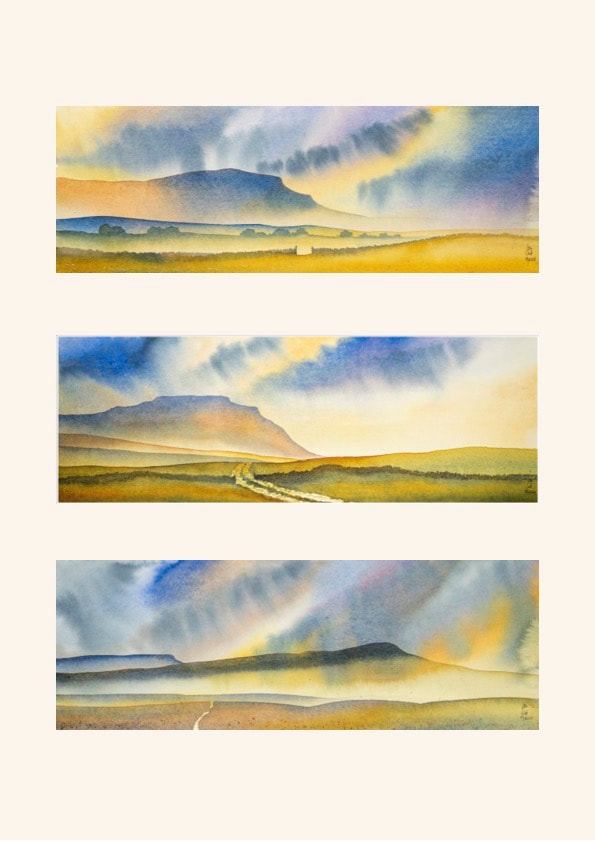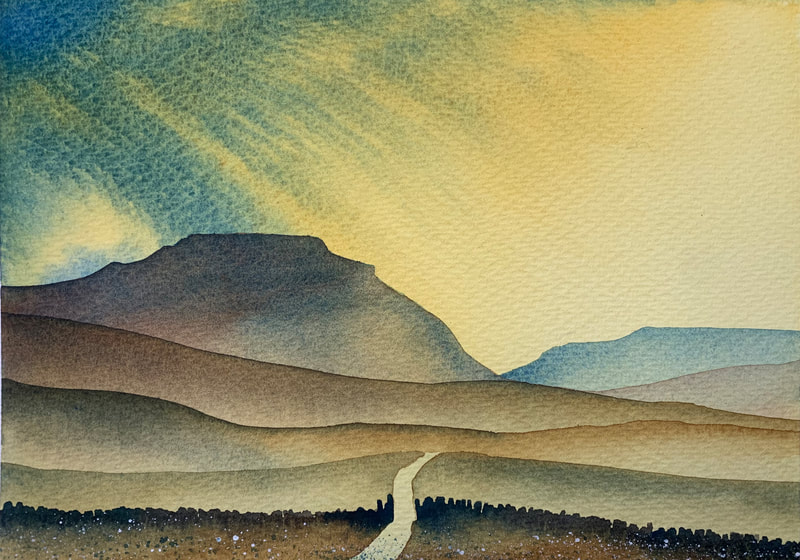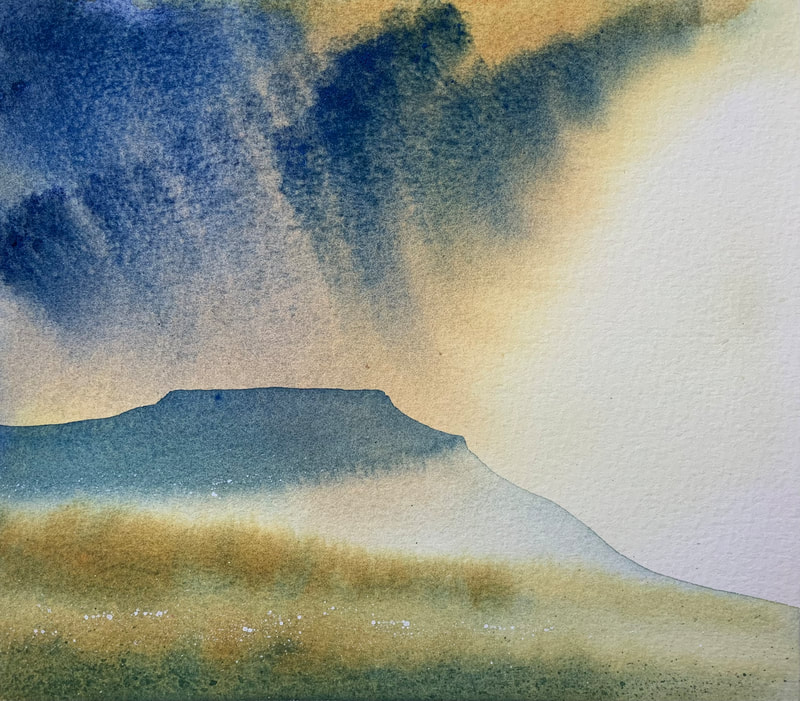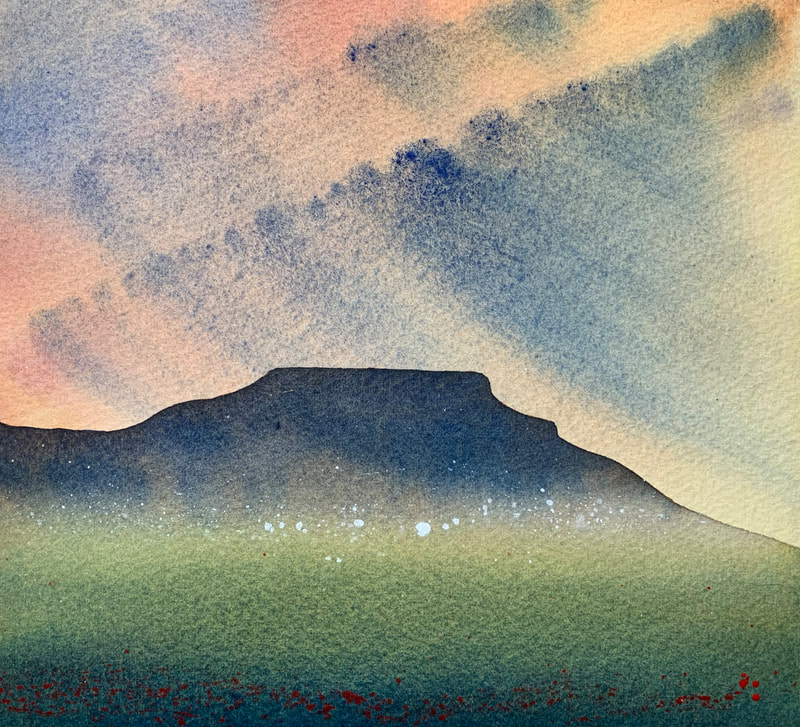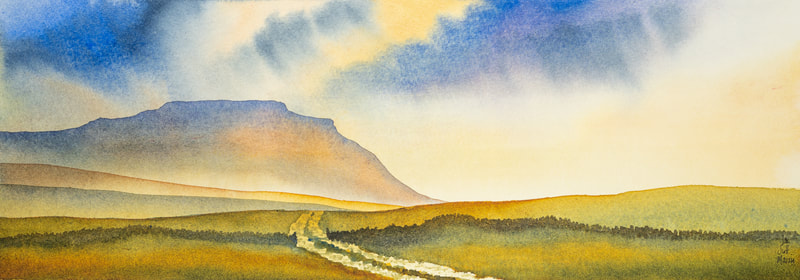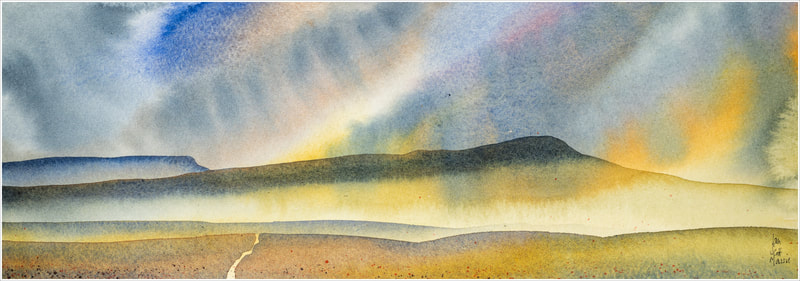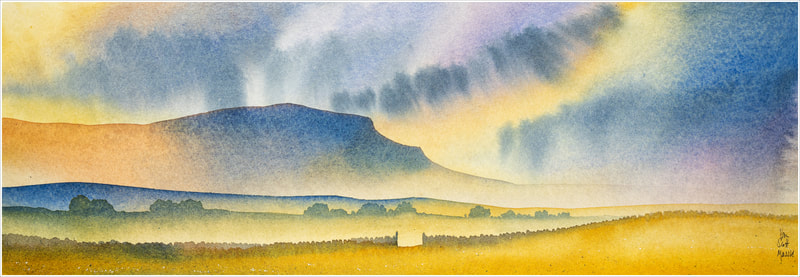The story of a painting
13th May - 4th July
How does one painting develop from idea to a finished work?
Mini Exhibition by Ian Scott Massie
How does one painting develop from idea to a finished work?
Mini Exhibition by Ian Scott Massie
Ian scott massie
Ian Scott Massie was born in London in 1952. After going to university in Durham he moved to Masham in Wensleydale in 1987.
He paints mainly in watercolour and also produces handmade screen prints.
Ian strives to portray the personality of the landscape. The major themes of Ian’s paintings are the effect of the light and weather on the landscapes chosen, coloured and textures to reveal their character.
He paints mainly in watercolour and also produces handmade screen prints.
Ian strives to portray the personality of the landscape. The major themes of Ian’s paintings are the effect of the light and weather on the landscapes chosen, coloured and textures to reveal their character.
The plan for this painting was as part of a triptych of the Three Peaks - Penyghent, Ingleborough and Whernside. The theme was to be a portrait of the peaks in springtime.
Ingleborough is a very special place. Not only have I climbed up and over it, I’ve also been through some of the pot holes under it. Its beautiful profile is visible from the Lake District, Morecambe Bay and from most of the hill tops in the Yorkshire Dales. Many artists have painted it, including J M W Turner.
The summit is crowned by the remains of an Iron Age stone-built hill fort within which are the tumbled walls of about twenty circular huts. The stone rampart of the fort is nearly 1000m long. It is the highest hill fort ( at 720m) in England and it is thought to have been built by the Brigantian tribe (who held this era prior to the Roman invasion) as a symbol of power and status. In the shadow of Ingleborough the road from the Ribblehead Viaduct to Ingleton runs next to a well preserved Roman road.
From the summit you can see to Scotland and the Irish Sea. Ingleborough is visited by thousands of people every year walking, running or cycling the 3 Peaks circuit.
I’ve painted Ingleborough many times. It has become for me an iconic symbol of the Dales. The winds here meet from East and West so the cloudscapes are never still, constantly evolving in abstract patterns. I’ve chosen as my viewpoint a track close to the road that climbs from Hawes in Wensleydale, along Widdale and runs beneath the Ribblehead Viaduct.
I started with two studies to try to capture a directional cloud formation. I worked in two very different palettes, exploring the possible ways to get the feeling I wanted.
Ingleborough is a very special place. Not only have I climbed up and over it, I’ve also been through some of the pot holes under it. Its beautiful profile is visible from the Lake District, Morecambe Bay and from most of the hill tops in the Yorkshire Dales. Many artists have painted it, including J M W Turner.
The summit is crowned by the remains of an Iron Age stone-built hill fort within which are the tumbled walls of about twenty circular huts. The stone rampart of the fort is nearly 1000m long. It is the highest hill fort ( at 720m) in England and it is thought to have been built by the Brigantian tribe (who held this era prior to the Roman invasion) as a symbol of power and status. In the shadow of Ingleborough the road from the Ribblehead Viaduct to Ingleton runs next to a well preserved Roman road.
From the summit you can see to Scotland and the Irish Sea. Ingleborough is visited by thousands of people every year walking, running or cycling the 3 Peaks circuit.
I’ve painted Ingleborough many times. It has become for me an iconic symbol of the Dales. The winds here meet from East and West so the cloudscapes are never still, constantly evolving in abstract patterns. I’ve chosen as my viewpoint a track close to the road that climbs from Hawes in Wensleydale, along Widdale and runs beneath the Ribblehead Viaduct.
I started with two studies to try to capture a directional cloud formation. I worked in two very different palettes, exploring the possible ways to get the feeling I wanted.

